
| |
| |
Lana S. Martin, PhD candidate |
environmental archaeology | ucla department of anthropology
download c.v. |
| |
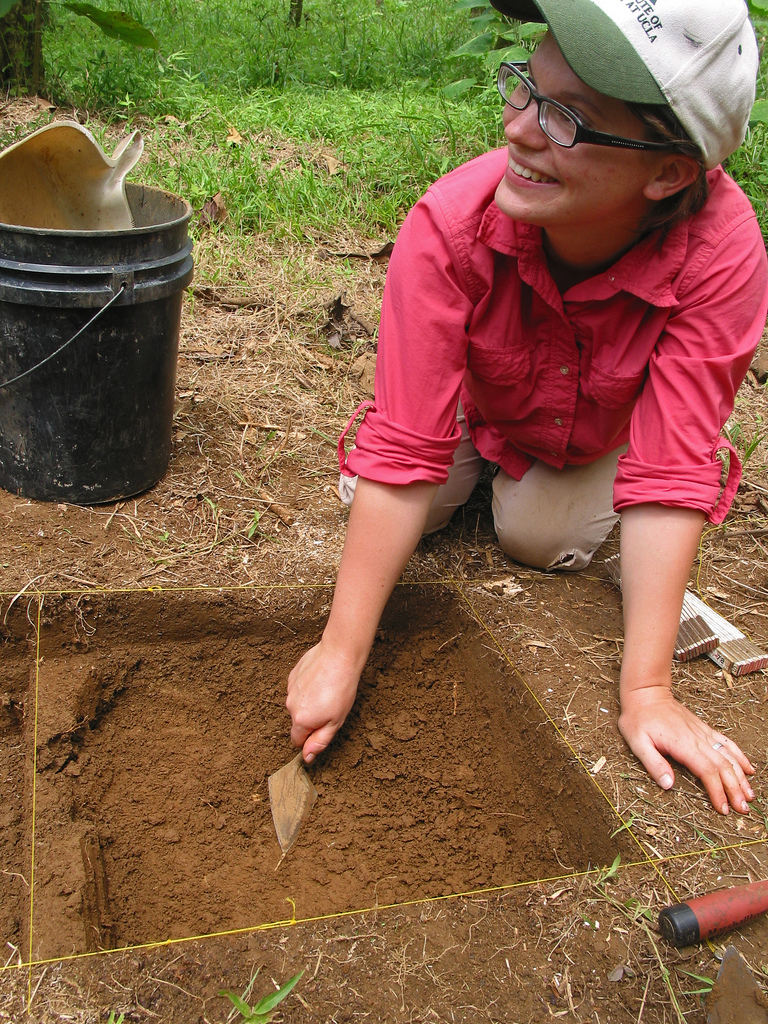 |
| |
Education |
2010 to present |
University of California, Los Angeles
Doctoral candidate, Anthropology, subfield: Archaeology
Committee: Richard G. Lesure (chair), Jeanne E. Arnold, Greg Schachner, Amber VanDerwarker (UC Santa Barbara), and Tom Wake (Cotsen Institue of Archaeology at UCLA) |
2008 to 2010 |
University of California, Los Angeles
M.A., Anthropology, subfield: Archaeology
Master’s thesis: Reconstructing Paleoenvironmental Instability and Plant Resource Availability on Santa Cruz Island using Macrobotanical Analysis
Committee: Jeanne E. Arnold, Greg Schachner, Li Min |
May 2007 |
The University of Texas at Austin
B.A., Anthropology with honors
Senior honors thesis: Variability in Hunter-Gatherer Mortuary Practices: An Analysis of the Crestmont Site (41WH39) Burial Inclusions
Faculty Advisor: Michael R. Bever |
|
| |
Published and Submitted Manuscripts |
Arnold, Jeanne E. and Lana S. Martin. (2014). Botanical Evidence of Paleodietary and Environmental Change: Drought on the Channel Islands, California. American Antiquity 79(2):227-248. doi:10.7183/0002-7316.79.2.227.
Lesure, Richard G., Lana S. Martin, Katelyn J. Bishop, Brittany Jackson, and C. Myles
Chykerda. (2014). The Neolithic Demographic Transition in Mesoamerica. Current Anthropology, in
press (accepted for publication 4/8/2014).
|
| |
Research Interests |
Human-environment relationships, food production and sociopolitical organization, adaptations to climate change, paleoethnobotany, zooarchaeology, prehistoric archaeology of North and Central America, statistical applications in archaeology, multi-scalar inquiries, archaeological photography and illustration, descendant community involvement, cultural resource management |
| |
Previous Research Experience |
Research experience includes field and laboratory methods in both the academic and cultural resource management setting. Field experience includes archaeological excavation, survey, and mapping with a total station/GPS in Texas, New Mexico, California, and Panamá. Laboratory experience includes artifact photography, digital map making, lithic analysis, macrobotanical analysis, faunal analysis, paleofaunal preservation/stabilization, shell midden sorting, bulk artifact curation, and preparation of background reviews, cultural constraints analyses, and project reports. [download complete c.v.] |
|
| |
Previous Teaching Experience |
Experience teaching in the classroom setting includes leading undergraduate students in discussion sections as a Teaching Assistant for Anthro 8 (Archaeology: Introduction), delivering lectures, advising the writing process and grading written assignments, and developing lesson plans, teaching materials, and assignments for introductory and advanced archaeology courses. Experience as a field school instructor includes training students in field and laboratory techniques, supervising extracurricular activities, and mentoring students in archaeology careers. [download complete c.v.] |
|
| |
Technical Skills |
Technical skills include field and artifact studio macro/photography, data management using Microsoft Excel and Access, advanced use of Adobe Creative Suite for photo editing, digital illustration, and production of conference posters and publication layouts, and intermediate use of STATA statistical software package, R statistical programming language, ArcGIS software for creating maps, and HTML and CSS web programming languages. |
|
| |
| |
Conference Posters (click to view PDF)
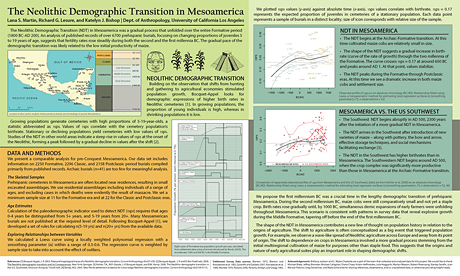 Society for American Archaeology Annual Meeting, April 2014, Austin, TX Society for American Archaeology Annual Meeting, April 2014, Austin, TX
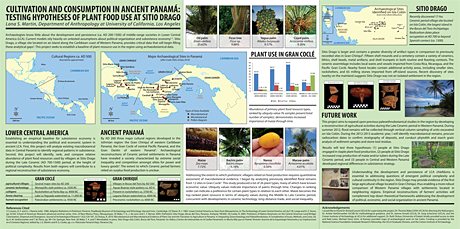 Society for American Archaeology Annual Meeting, April 2012, Memphis, TN Society for American Archaeology Annual Meeting, April 2012, Memphis, TN
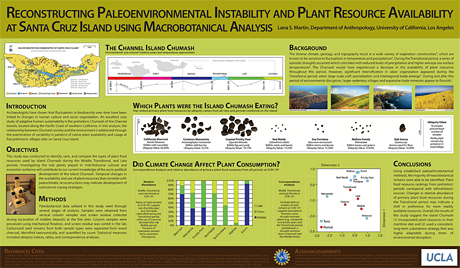 Society for American Archaeology Annual Meeting, April 2010, St. Louis, MO Society for American Archaeology Annual Meeting, April 2010, St. Louis, MO
 Society for American Archaeology Annual Meeting, April 2007, Austin, TX Society for American Archaeology Annual Meeting, April 2007, Austin, TX
|
| |
| |
| |
|
|
| |
| |
|

|
| |
 |
| |
Paleoethnobotany
Paleoethnobotanists use plant remains recovered from archaeological contexts to reconstruct ancient foodways. Macrobotanical remains (e.g., carbonized seeds, rinds, and shells) are particularly important to identifying and inferring relative importance of different plant food types in the diet. Microbotanical remains such as phytoliths (silica structures shedded by plant cells) and starch grains (glucose molecules used as food storage by plant cells) can be extracted from archaeological soils and artifact residues to identify even more plant food types incorporated in ancient diet.
Paleoethnobotany has increasingly provided important contributions to anthropological inquiry in the long-term development of human culture. Reconstructions of farming and foraging activities, as well as reconstructions of plant food processing, cooking, and consumption, provide access to the daily lives of people on a fine scale that is often overlooked when relying on other lines of archaeological evidence.
|
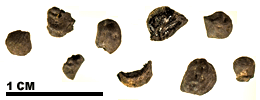 |
| |
| |
| |
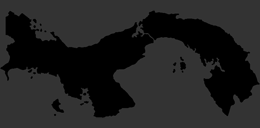 |
| |
Research in Panamá
My dissertation investigates the role of environmental conditions and social factors in the development of ancient hierarchal society. Specifically, it evaluates how people in marginal and less agriculturally productive areas developed a resilient subsistence economy capable of supporting complex society without degrading the local environment.
To address this question, I examine plant and animal remains excavated from Sitio Drago (ca. AD 700 to 1500), a politically important archaeological village site located on a Caribbean island in Panama. The ultimate goal of this study is to highlight the diverse array of subsistence economies and productive landscape modifications capable of supporting large-scale populations, particularly in marginal regions. To date, most studies of farming and foraging in ancient Panama have focused on villages located in the central highlands and Pacific foothills – regions with a cooler, drier tropical climate that better facilitates agricultural productivity. Although highly informative, these studies alone do not provide us with a complete picture of food production in ancient Panama. Villages located in the warmer, wetter climate of the western Caribbean lowlands contribute an additional narrative of marginal landscape improvement, giving us more insight into sustainable adaptations possible in societies past and present.
My project is the first integrative analysis of plant and animal remains from Western Panama and provides new datasets valuable for regional and global comparisons. Preliminary findings indicate people at Sitio Drago intensively processed staple plant food crops of either maize or manioc while relying heavily on tree fruits and palm nuts, suggesting a long-term investment in producing fertile agricultural fields and managing locally-available forest resources.
|
|
|
| |
| |
| |
 |
| |
Research in California
Archaeological research has shown that fluctuations in biodiversity over time are linked to changes in human culture and social organization. This project uses macrobotanical evidence from five prehistoric village sites on Santa Cruz Island, off the southern California coast, to investigate the relationship between Late Holocene Chumash society and the environment. Variability in the availability of native plants confirms that Transitional period (A.D. 1150 – 1300) episodic droughts negatively impacted island floral diversity and suggests the Chumash were forced to cope with changes in vegetation regimes.
Drought-resistant food plant resources were more common at island sites during the Transitional period. A primary food resource (Western sea purslane) imported from the mainland first appeared at this time, suggesting the Chumash intensified cross-channel trade to fulfill dietary needs during times of resource stress. A number of economic specializations emerged at this same time, including large-scale bead making. This study supports the argument that some past human societies adapted sustainably to environmental disruption through flexible reorganization of socioeconomic and political systems.
|
|
|
| |
| |
| |
 |
| |
Research in Texas
As part of an honors thesis project, I conducted a statistical analysis of stone, faunal bone, and shell artifacts recovered from an inland coastal Middle Archaic (6,000 – 3,000 yrs BP) to Late Archaic (3,000 – 1,000 yrs BP) hunter-gatherer cemetery. Results indicate that significant differences in the type and quantity of burial offerings were detectable among individuals in different age and sex groups, contributing to considerations of social complexity and material differentiation in mobile, egalitarian hunter-gatherer societies.
Specifically, the quantity of inclusions increased with age, and female burials were more likely to be furnished with shell ornaments than male burials. This suggests the presence of individual preference and material differentiation among members of egalitarian societies lacking a distinct sociopolitical hierarchy.
|
|
|
| |
|
|



